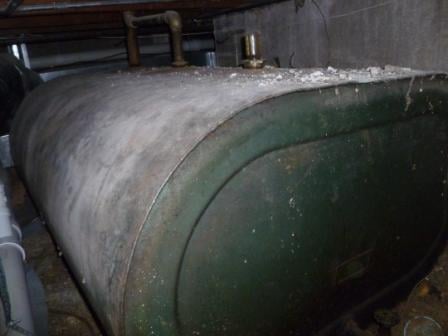How do cold flow improvers work?
With fall and winter upon us, diesel fuel users are getting into the winter fuel mindset. The biggest issue with diesel fuel in the wintertime is the...
2 min read
Bell Performance : Aug 31 2022
As the country's climate changes, we're seeing more and more severe winter weather events. As of this month, August, across much of the nation, the cold weather is soon to be arriving. This is the time for diesel users to start arming themselves against cold weather problems with a good diesel anti-gel additive.
![]() Diesel fuel itself is a complex mix of all different kinds and sizes of carbon molecules - some straight-chain, some cyclical, aromatics, aliphatics, and all sorts of chemistry names can be applied. This mix includes paraffin wax molecules - wax molecules tend to be very heavy and complex. In normal diesel at normal temperature, the waxes are happily dissolved in the diesel fuel and burn right along with everything else, thus helping to provide some of the diesel's energy value. But when it gets cold, the wax becomes undissolved, and the fuel clouds up. This is the first step - the cloud point - towards the fuel gelling up. As the fuel gets colder, more of the wax "drops out" of the solution, and the wax crystals bump into each other and stick together (becoming larger). This process accelerates until enough wax is in the fuel that it will clog fuel filters and shut the engine down.
Diesel fuel itself is a complex mix of all different kinds and sizes of carbon molecules - some straight-chain, some cyclical, aromatics, aliphatics, and all sorts of chemistry names can be applied. This mix includes paraffin wax molecules - wax molecules tend to be very heavy and complex. In normal diesel at normal temperature, the waxes are happily dissolved in the diesel fuel and burn right along with everything else, thus helping to provide some of the diesel's energy value. But when it gets cold, the wax becomes undissolved, and the fuel clouds up. This is the first step - the cloud point - towards the fuel gelling up. As the fuel gets colder, more of the wax "drops out" of the solution, and the wax crystals bump into each other and stick together (becoming larger). This process accelerates until enough wax is in the fuel that it will clog fuel filters and shut the engine down.
The ULSD we've been used to using for the past 15 years performs worse in the winter because of the way it's chemically treated at the refinery. The methods they use to remove the sulfur ("hydrotreating") make the now-ULSD fuel gel at higher temperatures than before. and it's harder to treat effectively for "cold flow" properties than diesel fuel from fifteen years ago because of this change to the fuel.
The two main options for lowering the cold filter plug point temperature - that is, protecting your fuel from gelling - are to dilute the fuel with kerosene or use an anti-gel additive package.
Kerosene is kind of an old-school way of doing things, but it works. It works - within limits. There's no magic reason why adding kerosene lowers gelling temperature - it's simply a matter of the fact that the kerosene dilutes the paraffin. How much temperature depression can you expect? It is fuel-dependent, meaning it depends upon the fuel's paraffinic composition. So we have to speak in generalities. But "generally speaking", you'd expect about a 3-degree drop in gelling temperature for every 10% kerosene added. So if you want to lower the fuel's gelling temperature by 10 degrees, you'll probably need to add 30% kerosene. Keep in mind that as you approach these larger proportions of added kerosene, you're also going to deal with a loss of mileage due to kerosene's lower energy value.
The other option, cold flow improvers, keeps the wax crystals from sticking together so they stay small and pass through fuel filters on their way to being harmlessly burned with the rest of the fuel. A good cold flow improver like Cold Flow Improver will give you an extra 10-20 degrees of safety net, so your truck doesn't shut down or refuse to start in cold weather. Given that you would need 30-50% kerosene to reach that level, anti-gel treatments are usually more cost-effective than kerosene dilution.
The only caveat with Cold Flow Improver products is that you have to add them before the fuel gets cold. These essential treatments prevent problems from happening, but they won't reverse a gelled fuel once it's passed its gel point. To do that, you need Quick Thaw.
The Game Has Changed For Diesel Winter Cold Flow. Are You Ready?
With fall and winter upon us, diesel fuel users are getting into the winter fuel mindset. The biggest issue with diesel fuel in the wintertime is the...
Are you gellin'? No, this isn't a Dr. Scholl's ad, but rather a question all diesel fuel users should be asking themselves during the cold winter...

This blog is for the portion of the country that still uses heating oil for their homes. That's about 6 million households across the country burning...